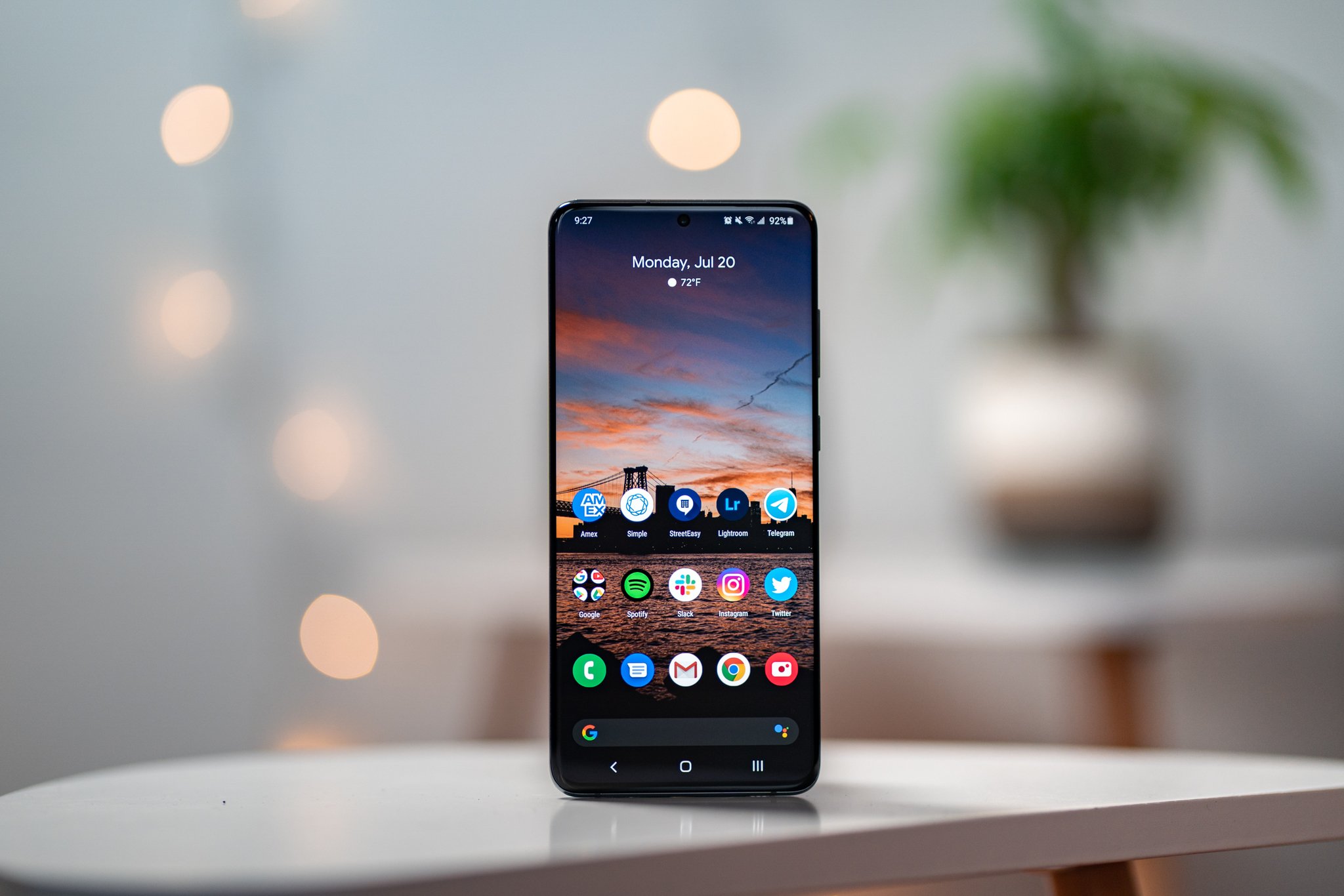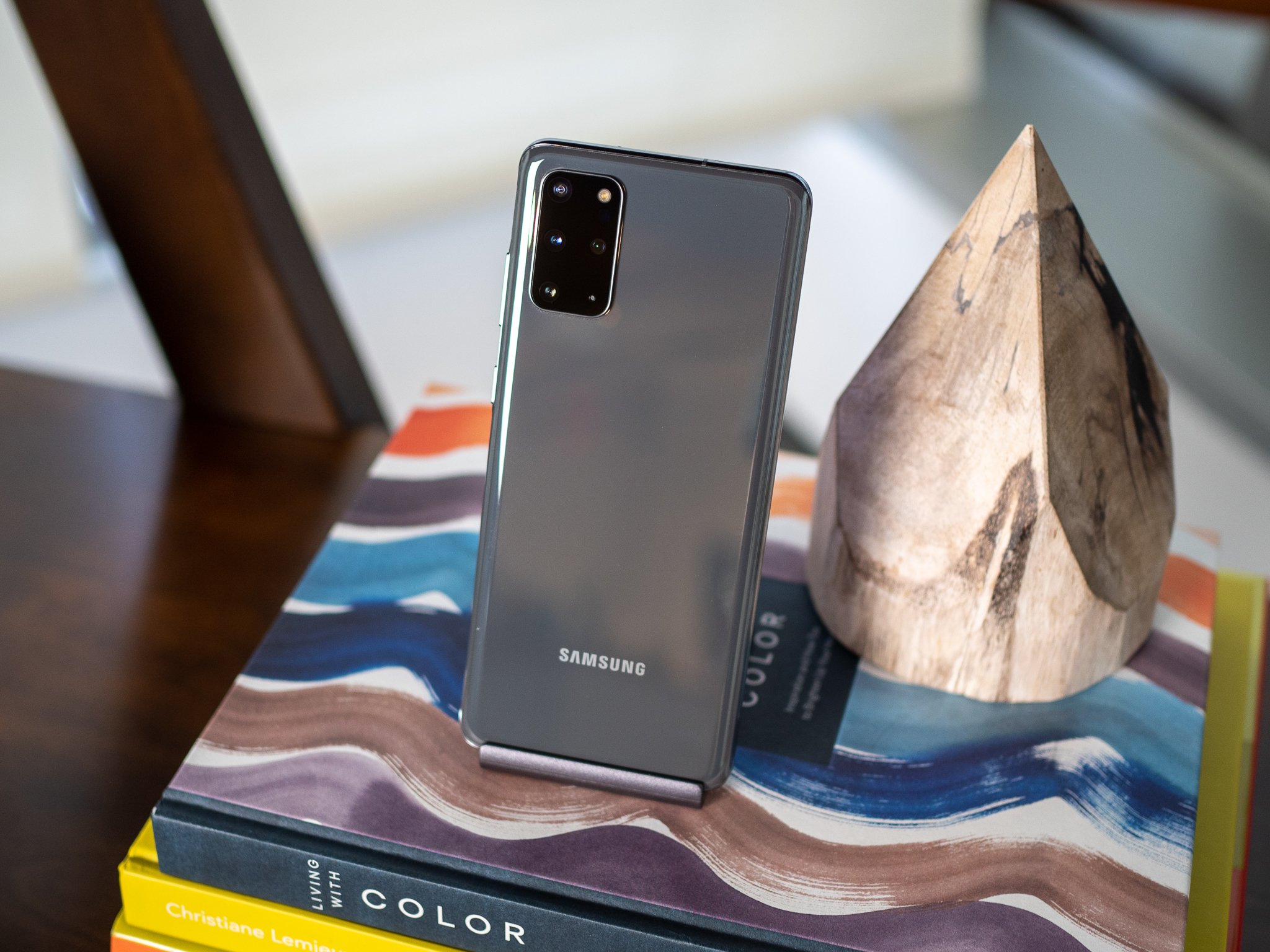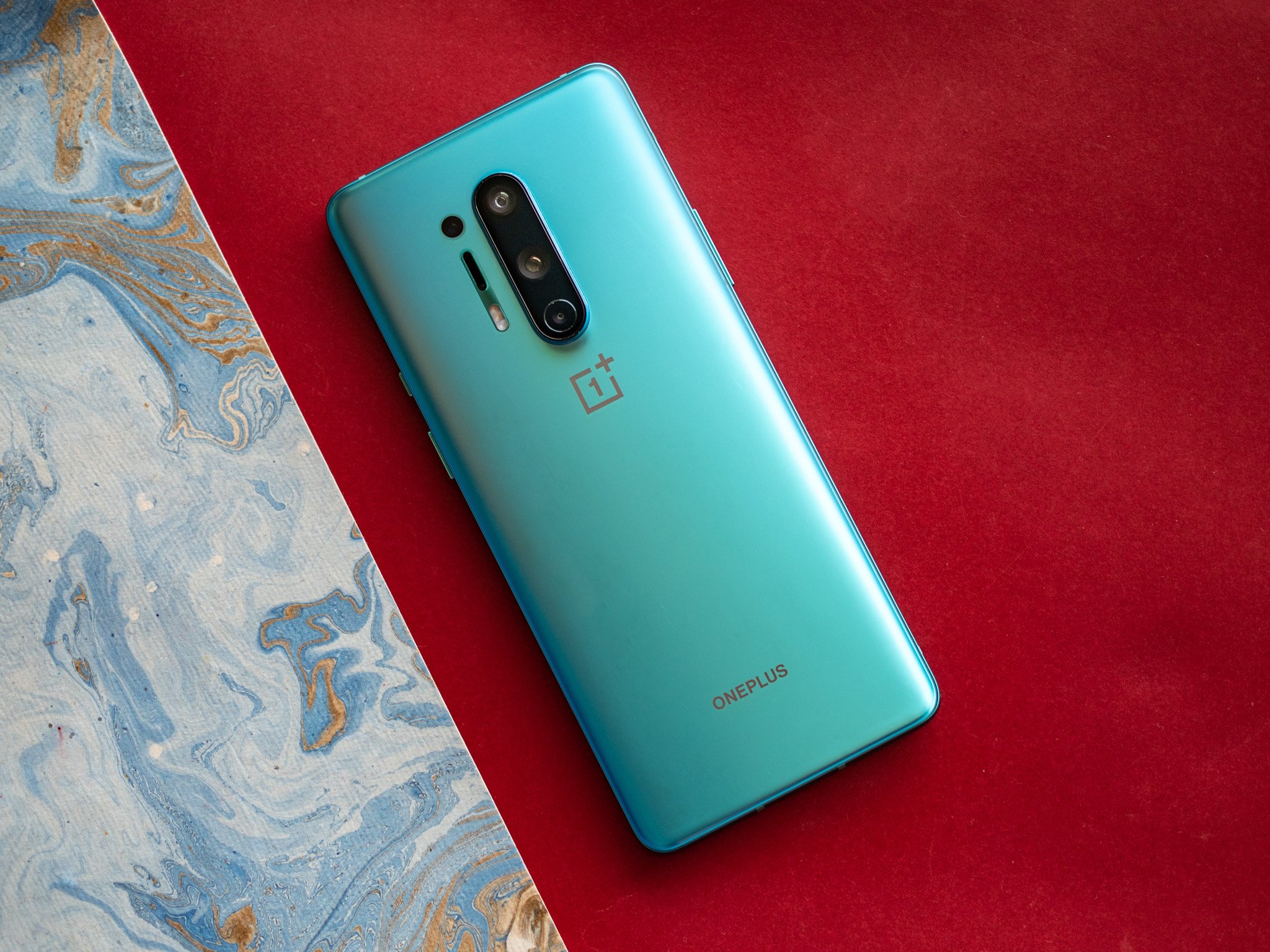How well has the Galaxy S20 Plus held up over the last five months?
Still the best phone in Samsung's lineup.
Samsung did the Galaxy S20+ a disservice by positioning it as a somewhat awkward in-between model within its current lineup, priced above the entry-level S20 but not quite as grandiose as the S20 Ultra. It may not have the latter's 100X Space Zoom camera, but that also means it avoids that camera's various problems.
I've said from the beginning that the Galaxy S20+ is the best phone within Samsung's trio of early 2020 flagships, and nearly half a year later, I still wholeheartedly stand by that statement. While it certainly isn't as pocket-friendly as the smaller S20, it offers just about everything you could ask for in a modern flagship and does so with virtually zero compromises.
At a glance
Samsung Galaxy S20+
Bottom line: Just weeks ahead of the Galaxy Note 20, the S20+ is still one of the very best Android phones on the market. It excels in nearly every category, ranging from specs to build quality, performance, cameras, display, and battery life. Samsung has kept it up to date with frequent software releases, and it's properly equipped for the future with features like 5G.
Pros
- Stunning 120Hz AMOLED display
- Top-of-the-line specs and performance
- Great cameras with manual controls
- All-day battery life
- Frequent software updates
Cons
- One UI still isn't for everyone
- In-display fingerprint sensor still isn't great
- Not for those looking for a small phone
$1,183 at Amazon $1,200 at Best Buy $1,200 at B&H
Jump to:
Galaxy S20+ What's still great
Samsung has had hardware down for quite some time now, and there's very little to complain about with the S20+ design. There's a nearly seamless transition from the curved glass on the front and back of the phone to the metal frame in-between, and the whole phone feels incredibly well-made. There's enough weight to the S20+ for it to feel substantial and premium, but I wouldn't call it a heavy phone. It feels just right.
The 120Hz refresh rate makes every other phone you've used feel jittery.
I do wish the back of the S20+ had the frosted matte finish found on phones like the Pixel 4 (save for Just Black) and the Nebula Green OnePlus 8. I'm not a huge fan of glossy finishes, and Samsung certainly played it safe with this year's color options, though I don't hate the Cosmic Gray finish I opted for.
I've mostly kept my S20+ in Samsung's leather case, which keeps the phone relatively thin and feels terrific in the hand. Having a case on the phone also reduces the effect of the much-maligned curved display — though the S20 series introduced much slighter curves anyway, and I can't recall a time when this curved screen has felt like a negative as far as usability is concerned.
Even if you've had negative experiences with curved displays in the past, I'd say to give this one a shot. It's certainly less pronounced than on phones like the OnePlus 8 or even Samsung's own Galaxy Note 10, to the point where you can basically just treat the S20+ as if it were a flat-screened device.
On the note of that display, Samsung really knocked it out of the park with one of the best displays I've ever seen on a phone. It's colorful and vibrant without leaning too heavily on saturation like Samsung displays of the past, and it's able to get both bright enough for outdoor use and dim enough to use at night comfortably.
It's sharp with a maximum resolution of WQHD+, and the 120Hz refresh rate makes every other phone you've used feel jittery — though it's still a shame that you're forced back down to 60Hz in WQHD+ mode.
My S20+ has been updated seven times since I first unboxed it.
Samsung has also done a great job with its software on the S20+. Now, no one would say that One UI 2.1 is the lightest Android interface out there. Still, it's incredibly functional, with by far my favorite one-handed usability features like the ability to scroll beyond the top entry in a menu to bring things closer to your thumb.
More importantly, Samsung has done well with keeping this software up to date; my S20+ has gotten seven updates since I first unboxed it, and received the July 2020 security patch just six days into the month. Now before you get too excited, this doesn't mean you should expect a day one update to Android 11, of course, but it's fantastic to see such good support for the phone so far.
I'm also generally positive on the S20+'s camera arrangement. I've written time and time again about not loving Samsung's image processing, which tends to go overboard with settings like saturation and exposure, but I'm certainly in the minority there. For the average person who isn't shooting every photo in RAW to throw into Lightroom before posting, the S20's shots have a sort of "Instagrammable" look that, in most cases, doesn't need retouching.
The thing that always strikes me about the S20+'s primary camera is just how much natural depth of field it's able to achieve. You're not getting the enormous sensor of the S20 Ultra here, but it's still significantly larger than the primary sensor in last year's S10, allowing the camera to take in more light and create a strong separation between the foreground and background in a shot.
It's pretty remarkable how consistent the shooting experience is across lenses, as well. Of course, you're still going to get the best image quality from the primary sensor. What's nice to see is that the colors don't change much at all when you switch to the ultra-wide or telephoto lenses, and even the transition from one lens to another is relatively seamless. I recently spoke with Qualcomm's Judd Heape on how that's going to get even better in the future, but in the meantime, the S20+ does it better than most.
Galaxy S20+ What hasn't aged well
A lot of my complaints with the S20+ are merely matters of personal preference, rather than inherent flaws with the phone. It's quite a bit bigger than even the Galaxy Note 10, which I recently called my "perfect size" for a phone — though of course, there's the regular S20 if you want the same experience in a smaller form factor.
I'm also not crazy about the One UI home screen, so while I try to keep things mostly stock during the review period, I installed my favorite third-party launcher, Lawnchair 2, onto the S20+ after my initial review was complete. The interface is much more to my liking now, but Samsung still hasn't rolled out support for gesture navigation while using third-party launchers.
The ultrasonic fingerprint sensor is still frustratingly slow and clumsy.
That means that just like on my Note 10, I'm back to the old days of Android 9's three-button navigation on the S20+. It could certainly be a lot worse, and this will eventually get sorted out with the rollout of One UI 2.5, but in the meantime, it feels like a silly limitation on such a modern device.
I do find myself frustrated continuously with Samsung's unlocking methods on the S20+, though. The ultrasonic in-display fingerprint sensor just isn't very good; it's far slower than the sensors on phones like the OnePlus 8 (albeit slightly more secure), and it regularly takes me two or three attempts before I'm able to unlock my phone with it — and yes, I've re-registered my fingerprint—multiple times.
The face unlock isn't much better, since it just uses the phone's front-facing camera, rather than depth mapping like the Pixel 4 or even an iris scanner like some of Samsung's older phones. Extreme lighting conditions like harsh sunlight or pitch darkness slow down or even negate face unlock entirely, and it isn't secure by any means.
Still, these are pretty minor grievances, which just goes to show how good the S20+ really is. Sure, if you want to nitpick, it isn't perfect. There's no headphone jack, and more niche legacy features like the heart rate sensor and IR blaster are gone too, for those who used them. But the S20+ is genuinely an exemplary, well-rounded phone without much to complain about, even five months into its life cycle.
The competition
There's plenty of healthy competition in the $1000 price range, some of which even come from Samsung's own selection.
The LG V60 is around $100 cheaper than the S20+, depending on where you buy it, and offers similar specs, the same 5G support, and absolutely tremendous battery life, even beyond what the S20+ can offer. LG also typically includes its Dual Screen accessory in the box, which allows you to add a secondary display to the V60 for multitasking.
If Samsung's software is what's holding you back from buying the S20+, the OnePlus 8 Pro is an outstanding alternative that runs on Oxygen OS, which is my personal favorite take on Android. Just like the S20+, the OnePlus 8 Pro has a curved 120Hz AMOLED display, 5G support, and a terrific set of cameras. However, it's quite a bit larger than the S20+, which can undoubtedly be offputting for someone like me who's always after the most compact phone that doesn't make too many sacrifices.
There's also Samsung's own Galaxy Note 10+ which, while a bit older than the S20+, packs most of the same software features and a similarly gorgeous panel, with the added benefit of the S Pen for productivity, note-taking, drawing, and remote use for various tasks. You'll lose out on some nice bonuses of Samsung's newer hardware like a high refresh rate display and 5G connectivity, but if that's something you're after, you might want to wait a few weeks for Samsung to announce the Galaxy Note 20 series.
Galaxy S20+ Should you buy it?
Who it's for
- Someone who wants a device that will last for the next few years
- Someone who loves to take photos
- Someone who needs a phone that can last all-day
- Someone who wants a big, beautiful screen
- Someone who wants to experience 5G
Who it isn't for
- Someone who wants a compact phone that fits in their hand and pocket
- Someone on a tight budget
- "Stock" Android purists
In a word: yes. The Galaxy S20+ continues to feel as new and snappy as it was the day I got it, and that's mostly thanks to continued software support and a future-proofed hardware feature set. Quite a few phones have come out since the S20+ was released back in March, but there haven't been any breakthrough features that outpace or antiquate what this phone can do.
There's always going to be something you wish you could change about your phone, but the S20+ is about as close to a one-size-fits-all device as it gets. Whether you primarily consider yourself a mobile photographer, a power user, a gamer ... you name it, the Galaxy S20+ can handle it all.
Samsung Galaxy S20+
$1,183 at Amazon $1,200 at Best Buy $1,200 at B&H
The Galaxy S20+ is still one of the very best Android phones on the market. It excels in nearly every category, ranging from specs to build quality, performance, cameras, display, and battery life. Samsung has kept it up to date with frequent software releases, and it's properly equipped for the future with features like 5G.
from Android Central - Android Forums, News, Reviews, Help and Android Wallpapers https://ift.tt/32Ihadv
via IFTTT













Aucun commentaire: